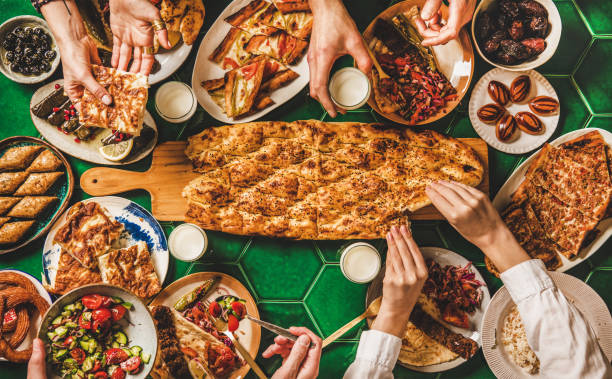What is Çeciir?
Çeciir is a traditional dish with deep roots in Turkish cuisine, known for its hearty and nutritious qualities. This dish, primarily based on chickpeas, embodies the essence of Turkish culinary traditions and hospitality. For centuries, Çeciir has been a staple in homes and gatherings, enjoyed for both its rich flavor and significant health benefits.
Its preparation involves simple yet flavorful ingredients, making it an accessible dish for both home cooks and professional chefs. While the recipe can vary slightly depending on regional influences, the fundamental characteristics of Çeciir remain consistent—offering a perfect blend of taste and nourishment.
The History and Origins of Çeciir
Like many traditional dishes, Çeciir has a long and fascinating history. Chickpeas have been cultivated for thousands of years, with evidence of their consumption dating back to ancient Mesopotamia and the Mediterranean region. Over time, different cultures incorporated chickpeas into their cuisines, leading to the development of unique dishes, including Çeciir.
In Turkey, chickpeas have been a crucial ingredient in many dishes due to their availability and nutritional value. Çeciir, in particular, emerged as a comforting meal that could be prepared with minimal ingredients while still providing a satisfying and flavorful experience. It is commonly served at family gatherings, special occasions, and even in daily meals, solidifying its place as a cherished part of Turkish food culture.
How is Çeciir Made?
Key Ingredients:
- Chickpeas (soaked overnight for best texture)
- Onions (finely chopped for enhanced flavor)
- Garlic (minced or crushed)
- Tomato paste (adds depth and color)
- Olive oil (for richness)
- Spices (cumin, red pepper flakes, bay leaves, and oregano)
- Salt and black pepper (for seasoning)
Step-by-Step Preparation:
- Soaking the Chickpeas: The first step in making Çeciir involves soaking dried chickpeas overnight. This helps soften them and reduces cooking time.
- Cooking the Base: Heat olive oil in a large pot and sauté finely chopped onions until they become translucent. Add minced garlic and continue cooking for another minute until fragrant.
- Adding Tomato Paste and Spices: Stir in the tomato paste, followed by the spices. Cooking this mixture for a few minutes allows the flavors to meld together.
- Simmering the Chickpeas: Drain the soaked chickpeas and add them to the pot. Pour in enough water to cover the chickpeas and bring the mixture to a boil.
- Slow Cooking: Reduce the heat and let the dish simmer for an hour or until the chickpeas become tender. Stir occasionally to prevent sticking.
- Final Seasoning and Serving: Once the chickpeas are fully cooked and the stew has thickened, adjust the seasoning as needed. Serve hot, often accompanied by rice or fresh bread.
Cultural Significance of Çeciir
Food plays a vital role in Turkish culture, often symbolizing hospitality and community. Çeciir is no exception. It is a dish that brings families together, especially during celebrations and gatherings. Sharing a meal of Çeciir is seen as an act of generosity and warmth, embodying the spirit of togetherness.
Many Turkish households have their own variations of Çeciir, with recipes passed down through generations. The dish is also commonly served in traditional Turkish restaurants, preserving its legacy and ensuring that new generations continue to appreciate its unique taste and cultural significance.
Health Benefits of Çeciir
Çeciir is not only a flavorful dish but also a highly nutritious one. Some of its key health benefits include:
1. High in Protein and Fiber:
Chickpeas are an excellent source of plant-based protein and fiber, making Çeciir a great option for vegetarians and those looking for a healthy meal.
2. Supports Heart Health:
The combination of olive oil and chickpeas contributes to heart health by reducing bad cholesterol levels and promoting better circulation.
3. Aids Digestion:
The fiber content in chickpeas helps regulate digestion and promotes gut health, reducing issues such as bloating and constipation.
4. Packed with Essential Nutrients:
Çeciir contains essential vitamins and minerals, including iron, potassium, and folate, which are vital for overall well-being.
Variations of Çeciir Across Regions
While the core recipe of Çeciir remains largely the same, different regions in Turkey have their own unique takes on the dish:
- Meaty Çeciir: Some regions add lamb or beef to enhance the dish’s richness.
- Spicy Çeciir: In southeastern Turkey, Çeciir is often made with extra chili peppers for a spicier kick.
- Vegetable-Infused Çeciir: Some versions include carrots, potatoes, or bell peppers to add more texture and flavor.
These variations reflect the adaptability of Çeciir and its ability to cater to different tastes and dietary preferences.
Serving and Pairing Suggestions
Çeciir is a versatile dish that pairs well with various sides and accompaniments. Some popular options include:
- Rice: A simple side of plain rice or pilaf complements the flavors of Çeciir beautifully.
- Bread: Freshly baked Turkish bread or flatbread is perfect for scooping up the rich stew.
- Yogurt: A side of yogurt helps balance out the spices and adds a refreshing contrast.
- Pickles: Tangy pickled vegetables add an extra layer of flavor to the meal.
Why Çeciir is a Must-Try Dish
For those who appreciate traditional and wholesome meals, Çeciir is a must-try dish. It offers a perfect combination of flavor, nutrition, and cultural heritage. Whether you are new to Turkish cuisine or a seasoned fan, Çeciir provides a delightful experience that showcases the depth and warmth of Turkish cooking.
Final Thoughts: Çeciir and Its Timeless Appeal
As modern food trends continue to evolve, traditional dishes like Çeciir hold their ground as beloved culinary treasures. Its simplicity, nutritional benefits, and cultural importance make it a dish worth exploring and enjoying. Whether made at home or enjoyed at a restaurant, Çeciir continues to bring people together through its comforting flavors and rich history.
For more insights on traditional dishes and cultural recipes, be sure to check out Crafter’s Gin, where we celebrate the beauty of global cuisines and the stories behind them.






